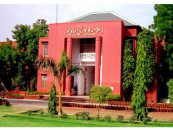Efficiency woes: Ministerial appointments hit new record
Despite the ruling party’s past claims of having a small cabinet when in power, the reality is different

With local government elections in the country’s most populous province on the horizon, the total number of ministers in the Punjab cabinet has risen to record levels in a bid to increase efficiency.
During the ruling party’s tenure, the portfolios of 11 ministers were changed 15 times. Whereas, two ministers, of the CM Usman Buzdar led cabinet, were sacked and four ministers resigned. However, three out of the four ministers rejoined the cabinet after resigning. The newest minister to be sworn in bringing the total to a record 38, which is the largest number of ministers in Punjab’s history, Hamid Yar Hiraj, is an elected member of the Punjab Assembly from Khanewal. Apart from the ministers, the Punjab cabinet also includes three advisors and four special assistants to the Chief Minister (CM).
However, the opposition and civil servants believe that the growing number of ministers is doing anything but promoting efficiency. A senior official of the Pakistan Administrative Service (PAS), while talking to The Express Tribune on the condition of anonymity, said that for the last two decades, government departments have been broken and divided to favor certain political individuals. “Pakistan Tehreek-e-Insaf (PTI) and all other political parties who have been in power in the province are equally responsible for ruining departmental service delivery,” he alleged.
Read Punjab making efforts to minimise role of middlemen
The official stated that as far as the present government is concerned, the Revenue Department, the Colonies Department, the Consolidation of Land Department, and the Professional Disaster Management Department have been handed over to separate ministers, even though all these departments are part of the Board of Revenue. “A senior member of the Board of Revenue is the head of all four departments at provincial level but has four ministers to report to,” he explained.
Similarly, the forestry department, fisheries department, and wildlife department are under the same administrative secretary but answerable to two ministers. “This division of departments increases administrative problems and reduces efficiency as a secretary has to be subordinate to several ministers,” the senior official said.
Retired government official, Jamil Awan, concurring with the official’s views, stated that he had seen officers confused with who they were supposed to report to. “Believe it or not the officers were frightened as to which minister’s meeting they should attend and which ones they should not,” Awan alleged.
However, part of the reason for the increase in the number of ministers is the increase in the number of seats in the Punjab Assembly in the last 20 years. In 1997, the number of elected seats in the Punjab Assembly was 240. Presently, the number of seats for elected officials in Punjab Assembly is 297 whereas the total number of seats is 371 - including, 66 reserved seats for women, and 8 reserved for minorities.
Ayesha Bano, a political worker and the member of a non-governmental organization (NGO), commenting on the matter, said that until Imran Khan came to power, he was sharply critical of the Pakistan Muslim League Nawaz (PML-N) and Pakistan People’s Party (PPP) leadership for keeping an army of ministers. “Imran Khan’s past statements are on record, in which he used to claim that the number of ministers in his government would be the lowest but the reality is otherwise,” she despondently remarked.
PML-N member Punjab Assembly, Mian Mujtaba Shuja-ur-Rehman, opined that the present government was standing on weak foundations, therefore, to save itself, it either makes new ministers or changes their ministries. “There is no actual monitoring of the performance of the ministers otherwise many ministers would have been sent packing by now,” Rehman told The Express Tribune.
Published in The Express Tribune, January 17, 2022.



















COMMENTS
Comments are moderated and generally will be posted if they are on-topic and not abusive.
For more information, please see our Comments FAQ